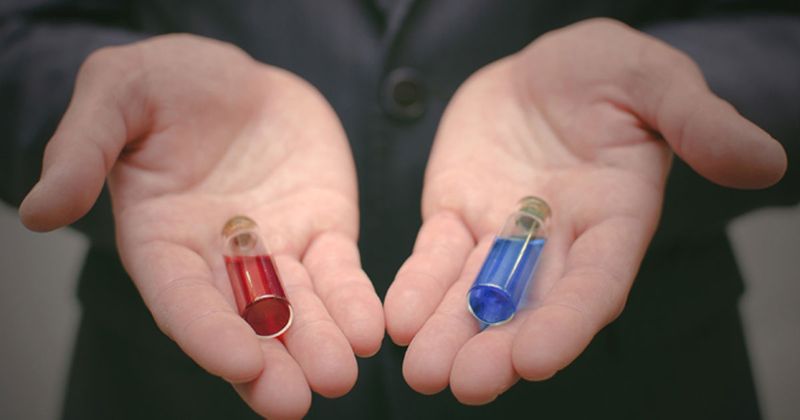Biosimilar uptake varies by drug class, practice type, hospital ownership status
Biosimilar use among Medicare fee-for-service beneficiaries seems to depend most on practice setting and hospital ownership status, with few patient or physician characteristics linked to usage, according to data in JAMA Network Open.
However, the types of practices — outpatient hospital department versus office — and hospital ownership status — for-profit versus not-for-profit — with high biosimilar use appeared to differ vastly based on drug class, noted the researchers. For example, patients in a hospital outpatient setting were 42% less likely to receive a filgrastim (Neupogen, Amgen) biosimilar than those in an office setting, but 73% more likely to receive an infliximab (Remicade, Janssen) biosimilar.

In addition, patients were 17 percentage points less likely to receive filgrastim biosimilars, and 11 percentage points more likely to receive infliximab biosimilars, in for-profit hospital outpatient departments.
“Through decades of experience in Europe, biosimilars have been proven to be effective and safe, yet their uptake in the United States has been slow particularly for Remicade,” Amelia Bond, PhD, of Weill Cornell Medical College, in New York, told Healio Rheumatology. “The U.S. health system should look to ways to increase biosimilar usage to help reduce patients’ out-of-pocket expenses as well as reduce overall drug spending. This study identified the appropriate level — patient, physician or practice — to target for encouraging the use of biosimilars.”

To analyze the patient, physician and practice characteristics associated with biosimilar use in Medicare, Bond and colleagues conducted a cross-sectional study of fee-for-service beneficiaries who received either a filgrastim or infliximab product between first launch and December 2018. First launch for filgrastim-sndz was during the third quarter of 2015, while infliximab-dyyb saw an initial release in the fourth quarter of 2016. In all, the researchers included 25,870 patients treated with a filgrastim biosimilar, with a total of 259,178 administrations, and 14,786 who received an infliximab product, with 174,973 administrations.
The researchers examined patient demographics and product clinical indications, as well as physician demographics, specialty, office size, multispecialty status and volume of filgrastim and infliximab administration. Hospitals were analyzed for size, ownership, 340B status, academic status and system affiliation. The primary outcome was the administration of filgrastim or infliximab biosimilars. Dean and colleagues performed data analysis from March to November 2020.
According to the researchers, no patient demographic characteristics — and only two out of nine clinical indications — were associated with biosimilar use in the adjusted analyses. The two clinical indications were neutropenia among the patients treated with a filgrastim biosimilar (adjusted difference = –2 percentage points; 95% CI, –3.9 to –2.9) and Crohn’s disease in the infliximab biosimilar group (–1.8; 95% CI, –2.9 to –0.8).
Several physician characteristics were associated with biosimilar administrations, including high filgrastim or infliximab prescription volume, with an adjusted difference of 3.6 percentage points for filgrastim, compared with low-volume practices, and 1.2 for infliximab. Specialty was also among the associated characteristics, with hematologist-oncologists demonstrating an adjusted difference of –3 (95% CI, –5.4 to –0.5) for filgrastim biosimilars, compared with primary care.
Outpatient hospital departments, compared with office practices, demonstrate adjusted differences of –16.1 for filgrastim biosimilars (95% CI, –18.1 to –14.1) and 3 for infliximab biosimilars (95% CI, 2.2-3.7). Regarding hospital outpatient department ownership status, for-profit facilities, compared with not-for-profits, had adjusted differences of –17.4 for filgrastim (94% CI, –21.6 to –13.3) and 10.8 for infliximab (95% CI, 6.7-14.9).
“For a number of reasons, physicians treating chronic diseases might be less willing to switch patients who are controlled on an originator biologic, such as Remicade, to a biosimilar equivalent,” coauthor Emma Boswell Dean, PhD, of the Miami Business School at the University of Miami, told Healio Rheumatology. “This has been one suggested reason for the slow uptake of Remicade biosimilars.”

“However, we find that uptake of biosimilars remains low over time, even as new patients start a biologic regimen,” she added. “Further, clinical characteristics of patients are not associated with receiving a biosimilar, nor are characteristics of the prescribing physician. This suggests that clinical factors are not driving the low uptake of Remicade biosimilars, but rather contracting practices between manufacturers and hospitals and physician practices are encouraging the continued use of originator Remicade.”





